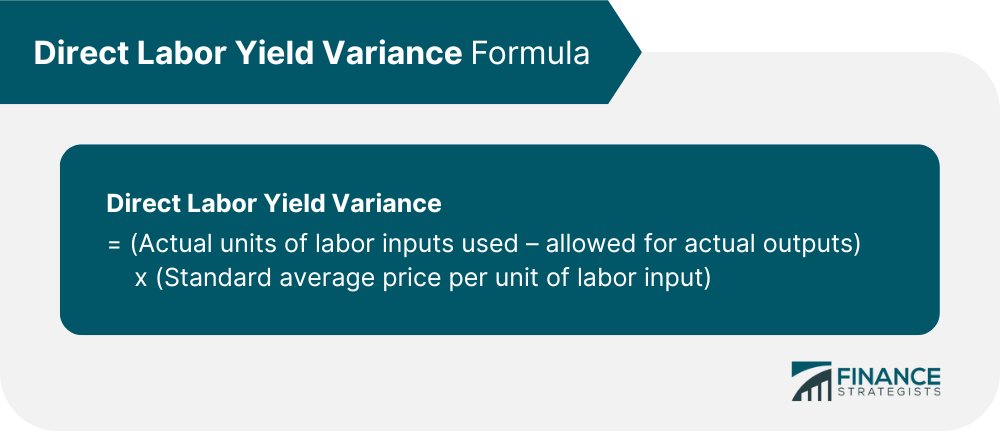Direct labor yield variance is the variance used to analyze the effect of changes in labor yield on labor cost. Direct labor yield variance can be computed as:Definition
Formula
(Actual units of labor inputs used – allowed for actual outputs) x (Standard average price per unit of labor input).
Direct Labor Yield Variance FAQs
Direct Labor Yield Variance (DLYV) is a measure of the difference between actual and expected labor costs, based on the number of units produced or services provided.
Calculating DLYV is important to assess the productivity of labor and identify areas where operational efficiency can be improved. It also serves as a key indicator of cost control.
DLYV can be affected by several factors, such as labor rate or wage changes, variations in employee skill levels, differences in the number of hours worked, and changes in working conditions.
Organizations can use DLYV to identify cost-saving opportunities, measure the productivity of their labor force, and improve operational efficiency.
Calculating DLYV can help organizations better control their labor costs, optimize production processes, and improve overall profitability. It also provides insights into the effectiveness of human resource management initiatives.
True Tamplin is a published author, public speaker, CEO of UpDigital, and founder of Finance Strategists.
True is a Certified Educator in Personal Finance (CEPF®), author of The Handy Financial Ratios Guide, a member of the Society for Advancing Business Editing and Writing, contributes to his financial education site, Finance Strategists, and has spoken to various financial communities such as the CFA Institute, as well as university students like his Alma mater, Biola University, where he received a bachelor of science in business and data analytics.
To learn more about True, visit his personal website or view his author profiles on Amazon, Nasdaq and Forbes.











